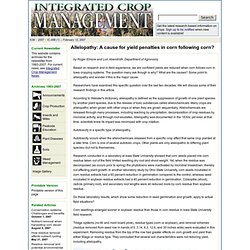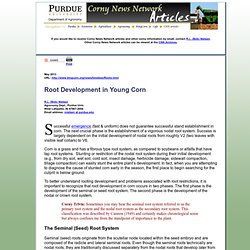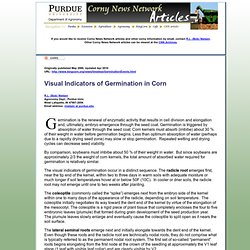

Using allelopathy to search for new natural herbicides from plants. Using allelopathy to search for new natural herbicides from plants Tim Haig, Jim Pratley, Min An, Terry Haig and Shane Hildebrand The EH Graham Centre for Agricultural Innovation, Charles Sturt University, Wagga Wagga 2678, Australia.

Email tihaig@csu.edu.au Abstract Allelopathy has been used as the basis for identifying plant species which may contain phytotoxic chemicals. Media summary Key words Herbicide resistance (HR), chemoassay, triasulfuron, phytotoxic screening, natural herbicides The overuse of synthetic herbicides for weed control over the last five decades has resulted in growing public concern over their impacts upon human health, the environment, and the evolution of herbicide resistant (HR) weeds (Vyvyan 2002). Natural compounds from plants offer excellent potential for new herbicidal solutions, or lead compounds for new herbicides (Duke et al. 2000; Vyvyan 2002). Plant material Aqueous extract preparation Bioassay screening of plant extracts Triasulfuron chemoassay Figure 1.
PhytoGen cottonseed. Corn Seed Product Details. The importance of allelopathy in breeding new cultivars - Kil-Ung Kim and Dong-Hyun Shin. Allelopathy is defined as the direct influence from a chemical released from one plant on the development and growth of another.

It is known that allelopathic substances are induced by environmental stresses, as shown in Figure 1. Allelopathic compounds may be released into the environment from plants by means of root exudation, leaching, volatilization and decomposition of plant residues in the soil (Figure 1). Allelopathic substances, if present in crop varieties, may reduce the need for weed management, particularly herbicide use. Allelopathy alone may not be a perfect weed management technology but it may be a supplementary tool for weed control. It is extremely difficult to demonstrate allelopathy in nature because of the complexity of plant interference which includes positive, negative and neutral effects on each other (Christensen, 1993). Figure 1. Recent research on rice allelopathy has advanced the possibility of breeding allelopathic rice crops for the following reasons: Allelopathy: A cause for yield penalties in corn following corn?
By Roger Elmore and Lori Abendroth, Department of Agronomy Based on research and in-field experience, we are confident yields are reduced when corn follows corn in Iowa cropping systems.

The question many ask though is why? What are the causes? Some point to allelopathy and wonder if this is the major cause. Researchers have examined this specific question over the last two decades. According to Webster's dictionary, allelopathy is defined as the suppression of growth of one plant species by another plant species, due to the release of toxic substances called allelochemicals. Autotoxicity is a specific type of allelopathy. Autotoxicity occurs when the allelochemicals released from a specific crop affect that same crop planted at a later time. Research conducted in a laboratory at Iowa State University showed that corn seeds placed into corn residue taken out of the field limited seedling dry root and shoot weight. Source: United States Department of Agriculture. Hoagland%20et%20al_2013%20AJ%2031-367-376.
NSRL : About Soy: Soybean Production. As of February 2010, all webpages for the National Soybean Research Laboratory have been remodelled, including this page.

For updated information, please visit us at www.nsrl.illinois.edu Soybean Production Planting, Growing and Harvesting Soybeans When is the best time to plant soybeans? Typically, beans planted during early May have the best yield potential. What is the ideal soil for growing soybeans? Ideal soil for optimum soybean production is a loose, well-drained loam. The advantages of loose, well-aerated soil include (1) movement of air to roots and nitrogen-fixing root nodules, (2) increased water-holding capacity with adequate drainage, (3) reduced erosion, (4) reduced weed populations, (5) maintenance of steady and balanced nutrients to roots and balance pH, and (6) increased potential to protect roots from harmful nematodes, insects pests, and pathogens.
How should the seedbed be prepared? What happens during germination and emergence? An important goal is stand uniformity. Root Development in Young Corn - Corny News Network (Purdue University) May 2013 URL: R.L.

(Bob) Nielsen Agronomy Dept., Purdue Univ. West Lafayette, IN 47907-2054 Email address: rnielsen at purdue.edu uccessful emergence (fast & uniform) does not guarantee successful stand establishment in corn. The next crucial phase is the establishment of a vigorous nodal root system. Corn is a grass and has a fibrous type root system, as compared to soybeans or alfalfa that have tap root systems. To better understand rooting development and problems associated with root restrictions, it is important to recognize that root development in corn occurs in two phases. Corny Trivia: Sometimes you may hear the seminal root system referred to as the primary root system and the nodal root system as the secondary root system. CPT-Mar90-REPOP. Visual Indicators of Germination in Corn - Corny News Network (Purdue University) Originally published May 2000, Updated Apr 2010 URL: R.L.

(Bob) Nielsen Agronomy Dept., Purdue Univ. West Lafayette, IN 47907-2054 Email address: rnielsen at purdue.edu ermination is the renewal of enzymatic activity that results in cell division and elongation and, ultimately, embryo emergence through the seed coat. Germination is triggered by absorption of water through the seed coat. By comparison, soybeans must imbibe about 50 % of their weight in water. The visual indicators of germination occur in a distinct sequence. The coleoptile (commonly called the “spike”) emerges next from the embryo side of the kernel within one to many days of the appearance of the radicle, depending on soil temperature.
The lateral seminal roots emerge next and initially elongate towards the dent end of the kernel. More images ] Troubleshooting Considerations When temperatures are optimum, these three parts of the seedling may emerge from the kernel on nearly the same day. Related References.